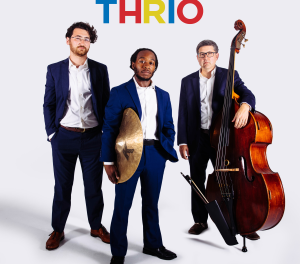To inaugurate the 36th year of the Hillyer Community Chorus, founder and conductor Paul Conway offered another round of rare fare on Sunday December 11, 2005, in Raleigh’s Hillyer Memorial Christian Church. Baroque composer Jan Dismas Zelenka was the subject of a previous Hillyer concert, in December 2000, which included a Te Deum and a Magnificat. For such a fascinating composer, another visit was definitely in order.
Zelenka’s life is quite interesting, as those who attended the concert found in the marvelous program notes by Johnnie W. Conway. Here only a brief overview is possible.
Zelenka was born in 1679 in Lounovice, Bohemia (in what is now the Czech Republic), and his musical education is presumed to have been in Prague. In 1710, he was recruited as a court church musician in Dresden for King Augustus II of Poland and Saxony, who had converted to Catholicism. Zelenka wrote numerous compositions for ordinary church functions throughout the reign of Augustus II and III. He was designated Church Composer in 1735 and continued composing, despite advancing ill health, until his death in 1745. Because of his moody, reclusive personality, he was not popular at court. His music was banned after his death, his manuscripts locked away. Many of his works were destroyed in the Dresden bombings of WWII, and only in the 1970s were some of his surviving compositions published. In the last few years, Zelenka has seen a renaissance, with many recordings and more published works.
Bach and Telemann are known to have admired Zelenka’s music, and it is easy to understand the attraction. His scores are strongly rhythmic and warmly melodic. They are not rigidly Baroque and often contain surprisingly modern-sounding harmonies. His instrumental works are arrestingly subtle, while his choral compositions are generally on a festively grand scale.
The concert had a pleasing format in which a different Zelenka “Equestrian Fanfare” for four trumpets and timpani preceded each of three choral works. In some ways these were the highlights of the afternoon. James Ketch, David McChesney, Dennis deJong, and Lisa Norris, along with timpanist Candy Pahl, filled the sanctuary with such precise, brilliant flourishes that one fully expected King Augustus to stride down the aisle.
The five-minute “Christe eleison” (part of a now-lost larger composition) has a gentle tempo, the strings and harpsichord providing a delicate underpinning for the ornate and often unpredictable alto vocal line. This challenged Nancy Brenner’s intonation in the highest notes, her confidence understandably wavering. She maintained an appropriately pleading tone, however, that was most effective in the lower range.
The ten-minute Magnificat in C has four short sections played as a single piece.
Soprano Meg Risinger bravely took on the substantial solo part, calmly and efficiently dispatching the intricate, long-breathed runs with a light but firm tone. She was especially good at nailing the repeated upward runs in the first section and the exposed high notes near the end. The chorus is used sparingly (and thus remained seated), but their voices were full, especially in the bouncy Gloria. The orchestra, one of the best Conway has convened in recent years, played with appreciable precision and impressive dynamic range. Kris Madson’s oboe and Brenda Bruce’s harpsichord provided a lovely combo under Risinger during the lyrical “Esurientes implevit bonis.”
The main work was the Mass in D (Missa Gratias Agimus Tibi). Scored for six soloists, strings, woodwinds, brass, timpani, and full chorus, the work leaves no question about Zelenka’s creativity as a composer, thanks to its perky little figures, its sudden shifts in dynamics and mood, its rich harmonies, and its felicitous combinations of instruments and voices. Particularly notable are the soprano-alto-tenor trio with harpsichord accompaniment in the “Et incarnates,” the beautiful tenor lines in the “Benedictus” accompanied by whirling flute (Irene Burke) and pastoral oboe, and the airy effect of two sopranos and two altos harmonizing during the middle section of the “Agnus Dei.”
Even though the mass lasts more than half an hour, the individual subsections of the six main parts are often only several measures long and no section takes more than a few minutes. There’s scant development or chance to settle into the mood before a section ends and rushes on to another. The bracing trumpets, so glorious when first heard, soon become clichéd in their constant punching up of the ends of sections. There is a certain generic feeling to the writing, which is not as distinctive as other Zelenka vocal works.
Zelenka favors female voices, so tenor David Wiehle and bass Lewis Moore had little to do. The pair was a welcome change in their duet during the “Laudamus te,” one of the rare moments to hear the rich-toned Moore. Wiehle had the right feeling for big solo in the “Benedictus,” although he had some trouble reigning in a nagging tremolo.
Conway kept the proceedings moving along, appropriately varying the tempos and textures as needed. The chorus, with little to do but sing out fully aside from a few quiet moments, was less impressive in this assignment than in others recently.
Nonetheless, we are all in Conway’s debt for his tireless efforts presenting such rarities within the modest means of the organization. We can look forward to Cherubini’s Mass in F on May 21, 2006.











